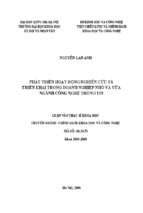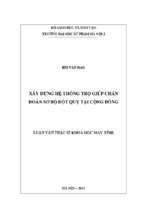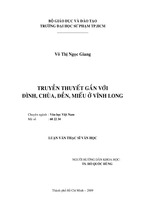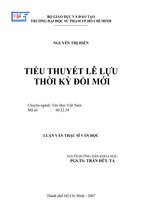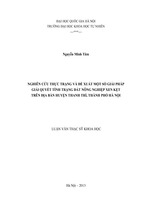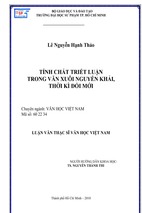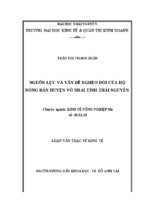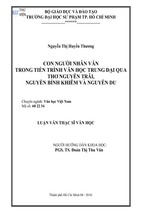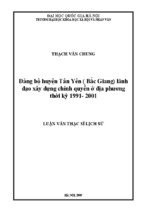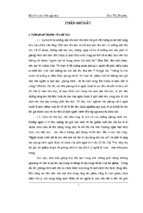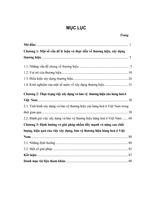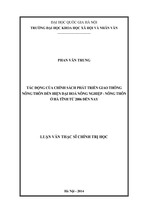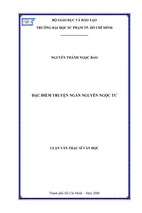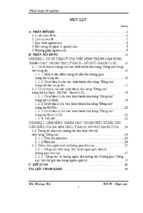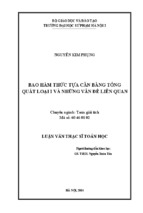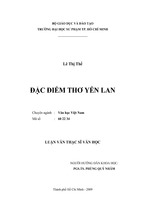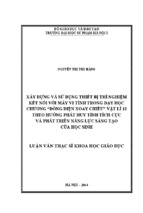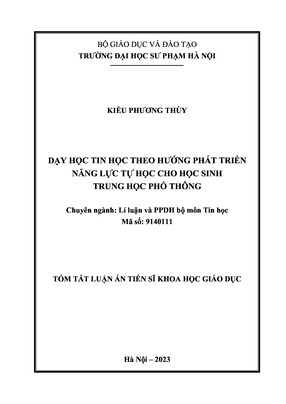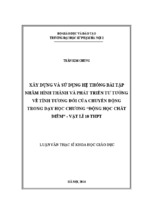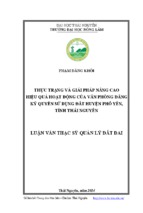The productive use of EFL dictionaries
The Productive Use of EFL Dictionaries
G. F. Huang
Fudan University,
Shanghai, China
The aim of this paper is to emphasise the value of using EFL dictionaries for production and, by presenting the linguistic difficulties
which Chinese learners of English have in writing, to show how EFL
lexicographers could help users still further with problems of production. Since the appearance of the earliest EFL dictionaries successive
improvements have been made to meet the learner’s decoding and
encoding needs more fully. The greatest number of EFL dictionary
features have been on the production side. Chinese students have encoding problems, with particular difficulties in using the verb and
article. The number concord between subject and verb, the use of
structural words and the right choice between synonymous words are
also areas of difficulty for them. Their errors may be interlinguistic
or intralinguistic, but a monolingual learner’s dictionary can only
help the learner with confusion type errors. Syntactic information in
a learner’s dictionary can be given at least in three ways: (a) by means
of pattern codes; (b) through examples; (c) through explanations in
usage notes. But foreign learners use EFL dictionaries more often for
decoding than for encoding, and much needs to be done to help them
to use syntactic information to fuller advantage.
1.
Introduction
The aim of this paper is to emphasise the value of making productive use of existing English as a foreign language (EFL) dictionaries and
to show in what respects EFL lexicographers could help users still further
with problems of production. With regard to the latter, I shall discuss the
learner’s linguistic difficulties by analysing some of the typical errors
made by Chinese students in their compositions.
The dictionary of a language is often characterized as &dquo;a list of all
the particular facts about the language&dquo; (Leech 1981). A language such
as English contains a great number of lexical items (simplexes,
derivatives, compounds and idioms), and it is the function of a learner’s
dictionary to list these items and provide the information (phonological,
grammatical, semantic, pragmatic, etc.) which will ensure their correct
and appropriate use. It is not always recognized that the EFL dictionary
is both a comprehension and a production resource intended to serve as
an efficient aid to foreign learners in their decoding and encoding
activities. Since the appearance of the earliest EFL dictionaries, lexicographers have made successive improvements in design in an attempt
54
Downloaded from rel.sagepub.com at UCSF LIBRARY & CKM on April 8, 2015
to meet both
decoding and encoding needs more fully. On the comall EFL dictionaries now provide simply worded definiside,
prehension
tions, and some even use a controlled or limited vocabulary as a
metalanguage for definition. Michael West was the first to put a special
&dquo;defining vocabulary&dquo; of 1490 items to use in his New Method Dictionary (1953) and in An International Reader’s Dictionary (1965) which
was derived from it. The Longman Dictionary of Contemporary English
(LDOCE 1978) achieves simple definitions by using a defining
vocabulary of 2000 words, which is given at the end of the dictionary in
an appendix. The use of a defining vocabulary in a learner-oriented dictionary is especially helpful to those who, because of their lack of proficiency in L2 vocabulary, are still unable to use the general dictionaries
designed for native speakers.
On the production side, the first major step was the provision of
verb patterns and the noun labels [C] (countable) and [U] (uncountable)
in the Idiomatic and Syntactic English Dictionary (Hornby et al. 1942),
reprinted from 1952 onwards under the title The Advanced Learner’s
Dictionary of Current English (ALD), which has within 30 years or more
passed through three editions (1952/63/74). Later dictionaries, as a rule,
improve upon earlier ones in extending the range of information on the
syntactic properties of headwords. Apart from giving grammatical codes
for the verb, the LDOCE accords similar treatment to the adjective, the
adverb and the phrasal verb and develops fresh symbols to codify other
syntactic properties of the noun. More elaborate coding systems in a
learner’s dictionary convey a great deal of useful productive information.
Furthermore, the separate information about collocates in the Oxford
Dictionary of Current Idiomatic English (ODCIE, Vol. I 1975, Vol. II
1983) and the notes on usage in the LDOCE are also aimed at the user
interested in language production.
The learner’s dictionary, as is the case with any general dictionary
to be of service to native speakers, includes &dquo;encyclopaedic&dquo;
and &dquo;lexical&dquo; words, i.e. low-frequency technical terms and high- or
medium-frequency everyday words, but the focus is on the treatment of
those words - grammatical words and so-called &dquo;heavy duty&dquo; verbs in
particular which &dquo;pose the most serious learning problems for the student&dquo; (Cowie 1983) and need to be dealt with through exemplification.
Therefore, EFL lexicographers attempt to provide the most detailed
guidance on syntax and collocation in entries for those high- or mediumfrequency lexical items by means of examples, including perhaps warnings or advice on pitfalls to avoid (as in the LDOCE). The EFL dictionary gives great weight to the lexicographer’s own examples, which
are designed not merely to clarify the definition, but rather as a way of
illustrating the syntactic features of a lexical item.
compiled
-
55
Downloaded from rel.sagepub.com at UCSF LIBRARY & CKM on April 8, 2015
It is obvious that several of the most recent developments in EFL
lexicography have been concerned with meeting the learner’s productive
needs. This tendency has been even more prominent since the early 1970s
(cf. Cowie 1984). That is, more and more attention has been given to the
leamer’s active production
the use of the right word or the appropriate
-
expression, the construction of a correct sentence and the ascertaining of
stylistic connotations.
Unfortunately, however, despite the massive amount of work done
by EFL lexicographers to supply encoding information, there is considerable evidence that foreign learners use their EFL dictionaries for
receptive rather than productive purposes. Native speakers use their dictionaries almost exclusively for information on the meaning of words (cf.
Quirk 1973), as they take it for granted that their encoding competence is
adequate. But foreign learners need enough information to help them to
avoid mistakes, and possibly even to attain elegance in their use of the
target language. We are faced here with a tremendous paradox: &dquo;It is for
encoding that students need the most information; it is encoding information which is the most difficult to supply; and yet this is the information which students use the least&dquo; (B6joint 1981). The mocking result
may be discouraging to EFL lexicographers, but the case is far from being
hopeless. It is undoubtedly the case that students do not speak or write
correctly and that they need dictionaries to use the language acceptably.
Grammar books only give general rules while dictionaries offer specific
facts about the language. We can be sure that students have individual
encoding needs that only the dictionary can meet.
But at present many students are not sufficiently acquainted with
EFL dictionaries to get from them the full amount of help which they
afford. EFL dictionaries are generally designed in such a way that
individual learners can use them by themselves without necessarily relying
on the help of a teacher. However, taking the Chinese learner’s present
reference habits and skills into account, it is necessary for the teacher to
give guidance on the full use of an EFL dictionary. Without proper
guidance from a teacher it seems hardly possible for the learner to be
aware of, let alone to use, the encoding information supplied in the
learner’s dictionary (or dictionaries) he owns. Learners can be much
influenced by their teachers when they come to buy a monolingual dictionary. This is also true when they come to use it. Therefore teacher
guidance is all-important. The learner has to be encouraged and taught
to use the EFL dictionary for encoding. Then by making constant use of
encoding information, he may come to realise that example sentences
can be used as a starting point for composition, example phrases as a
check on collocation, and register labels as a guide to stylistic accuracy.
The more he uses the dictionary for encoding, the more confident he will
56
Downloaded from rel.sagepub.com at UCSF LIBRARY & CKM on April 8, 2015
be in using it. It is only when the learner uses the dictionary for purposes
of language production as well as comprehension that he has got the
most out of it.
2.
The Learner’s
Encoding Problems
Having discussed briefly the value of encoding information in EFL
dictionaries and the insufficient use that is made of it, I can move on to
the second part of the paper, that is, the question of what remains to be
done by EFL lexicographers to help the learner with his encoding problems. &dquo;Dictionaries are ultimately made for and judged by the needs of
real people in real situations&dquo; (Hartmann 1981). In order to satisfy the
learners’ productive needs it is necessary for the dictionary maker to
know their linguistic difficulties. Let me begin by presenting a few
sentences for error analysis. These and all the other example sentences
given in this paper were written by Chinese students of English as an
academic subject. They were second-year students of the Foreign
Languages and Literature Department at the University of Fudan who
had studied English for about five years before they entered the university,
but did not begin to use monolingual learner’s dictionaries until they
became university students. The following are five sentences picked out
from their compositions:
(1)
(2)
(3)
(4)
(5)
When the typhoon came, our ship seemed dancing upon the waves,
rolling from side to side.
In order to get into the German-occupied area, he pretended an old
lady.
It was his carelessness that led the experiment to failure.
He has become a police officer for ten years.
Then the seller ran after me and offered £8 for it.
In sentences (1)-(5), the students expressed themselves quite acceptably except for the incorrect use of the verb in each sentence. There are
two possible reasons for that. One is first language interference, in this
case, interference from Chinese. The other is intralinguistic rather than
interlinguistic.
&dquo;Interference from the mother tongue is clearly a major source of
difficulty in second language learning&dquo; (Richards 1974). Learners tend to
use their native language structure to initiate sentences in the target
language, and where structures in the first language (L1) and the second
(L2) differ, interlinguistic errors will occur. The student who used
&dquo;seemed dancing&dquo; in (1) appeared to think that since the Chinese
equivalent of the finite verb §F » (haoxiang) can be followed by a word
expressing an action, he could use the -ing form of the verb after &dquo;seem&dquo;.
57
Downloaded from rel.sagepub.com at UCSF LIBRARY & CKM on April 8, 2015
Errors stemming from L1 interference are due to unfamiliarity with L2,
i.e. to the learner’s not having learned much of the target language (cf.
Dulay and Burt 1974).
It is possible that the error in (1) is due to L1 interference, but it is
difficult to explain the errors in (2)-(5) in the same way. These are intralinguistic ones &dquo;which reflect the general characteristics of rule learning,
such as faulty generalisation, incomplete application of rules, and failure
to learn conditions under which rules apply&dquo; (Richards 1974). Generalisation is &dquo;the use of previous available strategies in new situations&dquo; (Jakobovits 1969), but over-generalization of target language rules covers instances where the learner produces a deviant structure through his heavy
experience of other structures in the target language. In (2), for instance,
from &dquo;act the hero&dquo;, &dquo;play the fool&dquo;, &dquo;imitate her friend&dquo; and &dquo;take
off his teacher&dquo;, the student seems to have generalized, producing &dquo;pretended an old lady&dquo;. The learner may have come across the sentence
&dquo;The company’s financial policies led it to bankruptcy&dquo;, where &dquo;the
company&dquo; and &dquo;it&dquo; are co-referential, and his error in (3) is produced by
not observing fine restrictions on co-occurrence. It is perfectly correct to
say &dquo;He has been a police officer for ten years&dquo;, but &dquo;become&dquo; used in
the sense of &dquo;come to be&dquo; as in (4) is a change of state verb which cannot
combine with an adverbial of duration. In (5), the subject is a seller, not
a buyer, and while we can say &dquo;the buyer offered £8 for iy&dquo;, we should
also say &dquo;the seller offered it for £8&dquo;. The student confused the two complementary patterns, which while semantically different, are nonetheless
close enough structurally to be mistaken for each other. The influence of
several patterns may contribute to the making of errors.
If a learner is called upon to produce some L2 form which he is not
familiar with, he will tend to produce an erroneous form having its origin
in his L1. Therefore, as I suggested earlier, beginning students would be
more likely to make errors which can be traced to direct translations
from the learner’s source language. I can give some more examples of
interference type
(6)
(7)
(8)
errors:
Even
though so, the play ran for six weeks.
Although it was supposed to be very funny, but nobody laughed.
You are not a teacher of French, are you?
Yes, I am not. I am a teacher of English.
The author of (6) used &dquo;even though so&dquo; in the sense of &dquo;in spite of
this&dquo;, obviously a direct translation f¡ _m Chinese. The Chinese
but&dquo; can be used as a correlative conjuncequivalent of &dquo;although
tion, but in English the correlative conjunction is &dquo;although
yet&dquo;.
...
...
58
Downloaded from rel.sagepub.com at UCSF LIBRARY & CKM on April 8, 2015
The error in (7) may also be found in the writing of African learners. A
Chinese uses &dquo;yes&dquo; to express his agreement with a negative statement
while a native speaker of English would naturally say &dquo;no&dquo; on such
occasions. There are two typological answer-types to such questions.
English answers such questions by an acceptance or rejection of the implied
facts while Chinese (and also Japanese, Swahili, Korean) bases the
answers on the form of the interrogative (cf. James 1980). When a
Chinese student says &dquo;The level of the country life will be raised in a few
years&dquo;, his Chinese teacher of English knows what he means by &dquo;the
level of the country life&dquo; is &dquo;the national standard of living&dquo;. Yet
another example of an error due to interference is that a student wrote
&dquo;Her parents died one by one within a month&dquo; when he wanted to say
&dquo;Her parents died within a month of each other&dquo;.
When students reach the intermediate
or
advanced level they tend
to produce a greater proportion of confusion type errors which are due
to the misapplication of target language rules rather than the misapplica-
tion of source language rules (cf. Seliger 1978). Rather than reflecting the
learner’s inability to separate two languages, intralinguistic errors reflect
the learner’s competence at a particular stage, and illustrate some of the
general characteristics of language acquisition (cf. Richards 1974).
There
are some
types of
errors
that
we can
expect
an
EFL dic-
tionary to help with more readily than others. It is not easy to persuade
commercial publishers to produce dictionaries for a particular group of
learners, say, Chinese learners of English, because they need a world
market rather than a purely regional one (though the Chinese market is
bigger than many). So we cannot expect help with interference errors that
are not shared by several language groups. Yet as is mentioned in Cowie
(1979), &dquo;pedagogical dictionaries should help the learner to be aware of,
and if possible avoid, common sources of error in the language he is
attempting to acquire&dquo;. And it can be rightly assumed that a monolingual learner’s dictionary can only help the learner to apply target
language rules so as to avoid confusion type errors.
3.
Errors and EFL Dictionaries
I shall now refer to three EFL dictionaries with a view to finding to
what extent they have anticipated the learner’s difficulties in using
English verbs in examples (1)-(5), or in other words, how the verbs
misused by Chinese students are grammatically dealt with in these dictionaries. The three dictionaries to be compared in this paper are the Oxford
Advanced Learner’s Dictionary of Current English (1974, hereafter
ALD), the Longman Dictionary of Contemporary English (1978, hereafter LDOCE) and Chambers Universal Learners’ Dictionary (1980,
59
Downloaded from rel.sagepub.com at UCSF LIBRARY & CKM on April 8, 2015
hereafter CULD). The ALD and the LDOCE use verb pattern codes, but
the CULD has a limited traditional coding system which classifies verbs
as vt and vi. For reasons of economy I shall quote only that part of the
entry that highlights the point in question.
seem
ALD
LDOCE
[VP4D, E, 2A]
[13; L (to be) 1, 7, 9]
CULD vti
All three dictionaries give a number of illustrating examples after
the definition, but as I intend to compare mainly their coding systems,
these examples will not be quoted here. The learner faced with indecision
as to whether he can use &dquo;seemed dancing&dquo; in (1) can get information
from the codes in the ALD and the LDOCE. In the ALD, the pattern
&dquo;subject&dquo; + vi + present participle&dquo; is coded as [VP2E] (e.g. They’ve
gone dancing), and in the LDOCE, this pattern is represented by the code
[14] (e.g. She came running) or [L4] (e.g. She ended up dancing on the
table). As these codes are not noted against &dquo;seem&dquo; in the ALD or the
LDOCE, the learner can be sure that it is not correct to say &dquo;our ship
seemed dancing&dquo;. The CULD simply marks the verb as both transitive
and intransitive, and the grammatical information is implied in example
sentences. These examples are useful, but do not give clear guidance as to
whether a given pattern is excluded.
pretend
ALD
[VP7A]
to be
LDOCE
asleep. They
ed not to
see us.
[T1,3]
pretended sleep when his mother called him.
pretended to be reading.
vt
She was only pretending to be asleep;
I pretend not to understand; (formal)
He pretended
surprise ( = to be surprised).
He
He
CULD
Decoded, the code [VP7A] in the ALD means &dquo;subject + vt +
+ to-infinitive&dquo;, which shows that &dquo;pretend&dquo; used in the sense of
&dquo;give and appearance of, in order to deceive&dquo; cannot be followed by a
noun. (According to the ALD it can take a noun as an object when used
in a different sense.) In the LDOCE, the code [T1, 3] means that &dquo;pretend&dquo; is a transitive verb which can combine with one object, either a
noun or a to-infinitive. Two example sentences are given to support the
(not)
60
Downloaded from rel.sagepub.com at UCSF LIBRARY & CKM on April 8, 2015
code. The CULD lists the transitive use of &dquo;pretend&dquo;, providing three
examples, one of which corresponds to LDOCE [Tl]. Referring to the
LDOCE and the CULD, the learner finds &dquo;pretend&dquo; coded [Tl] and
labelled vt respectively, and such examples as &dquo;pretended sleep&dquo; and
&dquo;pretended surprise&dquo;. This grammatical information is not adequate for
the learner to avoid the error in (2), for he still cannot understand why
&dquo;pretended an old lady&dquo; is not permissible. What is needed in the
LDOCE and the CULD is the information that only abstract nouns can
be used as objects of &dquo;pretend&dquo;.
lead
ALD
LDOCE
CULD
[VP2C] (fig) This led to great confusion.
(&dquo;lead to&dquo; as a separate entry)
v prep [T 1, 4]
vi (fig: with &dquo;to&dquo;)
The heavy rain led to serious
floods; Eating too many sweets leads to rotten
teeth; This course of action might lead to difficulties.
The ALD code [VP2C] means that &dquo;lead&dquo; is an intransitive verb
followed by an adverbial adjunct. A style label &dquo;fig&dquo; (figurative) is
marked after the code, but &dquo;lead to&dquo; is not treated as a lexical unit. The
LDOCE treats &dquo;lead to&dquo; as a separate main entry and the code [Tl, 4]
clearly indicates the transitive use of the phrasal verb, though no example
is given. The CULD labels &dquo;lead&dquo; as intransitive and shows that when
used figuratively the verb is followed by &dquo;to&dquo;. The three examples are
informative.
become
ALD
a famous
He became a doctor. He has
The custom has now
He has
a rule.
accustomed to his new duties.
It’s becoming much
more expensive to travel abroad.
[VP2D]
man.
LDOCE
[L1,7]
He became
king.
The weather became
warmer.
CULD
1.
vi
His
job
coat has become
more
became increasingly difficult;
Her
badly torn; She has become even
beautiful.
’
2.
a
vi (of
doctor.
people)
She became
a
nun;
He became
All three dictionaries give much the same grammatical information. But since the learner often confuses &dquo;become&dquo; with &dquo;be&dquo;, as is the
case with (4), the rule that &dquo;become&dquo;, even when used in the perfective
61
Downloaded from rel.sagepub.com at UCSF LIBRARY & CKM on April 8, 2015
aspect, cannot go with
an adverbial of duration should be mentioned
either by way of a usage note or through examples of the comparative use
of &dquo;become&dquo; and &dquo;be&dquo; (e.g. He became a police officer ten years ago.
cf. He has been a police officer for ten years.). This information seems to
be missing in any of these learner’s dictionaries.
offer
ALD
[VP6A, 7A, 12A, 13A, 14]
We ed him the house for £20000/
for the house.
ed him £20000
LDOCE
[D1 (to); Tl: (for)]
She offered me £10000 for that book.
CULD vt He offered her £5 for the picture.
The codes in the ALD and the LDOCE give more detailed information about the syntactic behaviour of the verb &dquo;offer&dquo; than the label vt
in the CULD. All three dictionaries provide example sentences, but the
ALD gives two illustrative samples to show two different patterns in
which the verb is used. What is to be noted is that the shared subject
&dquo;we&dquo; in the ALD has different referents: it is the seller in the first and
the buyer in the second. It would be more helpful to the learner if the
ALD could make this clear by changing the subject.
So far, so good. The most important word in a sentence is the verb,
the structural criterion for a major sentence pattern being that every
sentence should have a predicator. Chinese students, like other foreign
learners of English, find it difficult to use English verbs (or phrasal
verbs) in an idiomatic way. From the grammatical information given in
the five entries in the three foremost EFL dictionaries, we can see that
some information is adequate, providing required guidance, but that
some detail is still missing. As far as the syntactic guidance on the use of
verbs is concerned, there is room for improvement in EFL dictionaries.
As a rule, Chinese students have less trouble with the English noun
than with the English verb, but they still misuse the noun at times. They
use uncountable nouns as countables as in the following sentences:
(9) Billy always complains about inflations.
(10) &dquo;A buck&dquo; is an American slang for &dquo;a dollar&dquo;.
It often occurs that the learner has difficulty in deciding which
may or may not be used in the plural form or be preceded by ’a’ ’ .
When he is in doubt, the learner turns to EFL dictionaries, but is not
nouns
always helped by them. The indication of [C] (countable) and [U] (uncountable) or nc (noun countable) and nu (noun uncountable) is very
62
Downloaded from rel.sagepub.com at UCSF LIBRARY & CKM on April 8, 2015
useful to the learner, but sometimes dictionaries differ in their coding.
&dquo;Inflation&dquo; is marked as [U] and nu in the ALD and the CULD respectively, but it is not marked at all in the LDOCE, which suggests that
&dquo;inflation&dquo; is regarded as a countable noun. Such conflicting information may leave the learner all the more confused. The word &dquo;slang&dquo; is
coded as uncountable in all three dictionaries, yet only the CULD gives
the illustrative example &dquo; ’A stiff’ is slang for ’a corpse’ &dquo; which resolves
the learner’s problem.
Another headache for Chinese students, but not only for them, is
number agreement between subject and verb. In their compositions we
can come across sentences like:
(11) At that time few of us was aware of the importance of being
diligent.
(12) I have two brothers, but neither are here.
(13) Tom or his sisters is going to Paris next week.
(14) Neither I nor he know her name.
True, such problems of agreement are really ones for the EFL
grammarian, but information on grammar and usage is also expected in
individual entries in an EFL dictionary. A good learner’s dictionary
should give guidance as to the form of the verb after a certain subject.
(Guidance on agreement is only needed in certain cases like &dquo;few&dquo;,
&dquo;either&dquo;, &dquo;neither&dquo;, &dquo;both&dquo;, &dquo;any&dquo;, &dquo;some&dquo;, etc.) In (11), the verb
must be used in the plural form, because the subject &dquo;few&dquo; is plural.
Fortunately, we get this information from the examples in all three dictionaries :
ALD
LDOCE
CULD
Few of those
worth buying.
There
Few of the children are tired.
I can’t give you one.
Few are as clever as he is.
roses are
are so
few that
In correct usage &dquo;neither&dquo; takes a singular verb, and so in (12)
&dquo;neither&dquo; must be followed by &dquo;is&dquo;. (The nearest nouns or pronouns
may govern agreement, e.g. Neither of the brothers were interested in
taking part.) In the three dictionaries we find such example sentences as:
ALD
LDOCE
CULD
Neither (one) is satisfactory.
2 books that are neither of them very good ( = neither
is good).
(They) neither of them wanted to go.
Neither of them could understand Italian.
63
Downloaded from rel.sagepub.com at UCSF LIBRARY & CKM on April 8, 2015
The ALD explicitly shows which form should be used after the
subject &dquo;neither&dquo;. The LDOCE uses the singular form in the explanation
given in the brackets. The CULD shows
touch the point in question.
a
useful pattern, but does not
When the nouns connected by &dquo;or&dquo; do not agree in number, as in
(13), the verb is governed by the noun to which it is nearer. In (13), &dquo;is
going&dquo; has to be replaced by &dquo;are going&dquo;. Can the learner get this overt
grammatical guidance from an EFL dictionary? The CULD does not
deal with this point. Neither does the ALD. Only the LDOCE mentions
this usage in the entry for &dquo;either&dquo;, where some illustrative examples are
helpful. As the Usage notes at &dquo;neither&dquo; in the American Heritage Dictionary of the English Language (AHD 1969) point out, when elements
within a &dquo;neither ... nor&dquo; construction differ in point of number, the
verb agrees in number with the element to which it is nearer; and when
the nearer element is a personal pronoun, the verb agrees with it.
Therefore, in (14), the verb should be in agreement with &dquo;he&dquo;, and the
correct sentence is &dquo;Neither I nor he knows her name&dquo;. Again, neither
the ALD nor the CULD tackles this problem satisfactorily. The LDOCE
gives the example &dquo;Neither my father nor I were there&dquo; in the entry for
&dquo;neither&dquo;, but the entry for &dquo;either&dquo; makes it clear that &dquo;either ... or&dquo;
and &dquo;neither ... nor&dquo; are plural when the word next to the verb is
plural. This is self-contradictory: the example at &dquo;neither&dquo; runs counter
to the point.
In the course of writing, Chinese students are often at a loss to
decide whether to choose a singular or plural verb after such subjects as
&dquo;a group of children&dquo;, &dquo;a pile of newspapers&dquo;’ or &dquo;a fine collection of
foreign stamps&dquo;. After &dquo;a group of children&dquo; either a singular or plural
verb may be used, but &dquo;a pile of ...&dquo; and &dquo;a collection of ...&dquo; can only
be followed by a singular verb. Unfortunately none of the EFL dictionaries seems to have foreseen this difficulty. What is more puzzling to
Chinese students is the number concord between a collective noun and a
finite verb. Grammatically, collective nouns sometimes can accompany a
plural verb even when they themselves are singular in form, but students
are not always certain whether they should use a singular or a plural verb
after collective nouns such as &dquo;family&dquo;, &dquo;government&dquo;, &dquo;committee&dquo;,
&dquo;class&dquo;, &dquo;audience&dquo;, &dquo;assembly&dquo; and &dquo;company&dquo;. They have difficulty,
for example, with the following:
(15) Her family is often quarrelling among themselves.
(16) The audience was shouting at the top of their voices.
In (15) and (16) the singular verb cannot sensibly be used at all
because of the plural pronoun &dquo;themselves&dquo; and the determiner &dquo;their&dquo;.
64
Downloaded from rel.sagepub.com at UCSF LIBRARY & CKM on April 8, 2015
The learner receives a good deal of help with (15) from all three dictionaries, but cannot find much explicit help with (16). The CULD does
not show number concord; the ALD gives the example &dquo;There was a
large audience in the theatre&dquo;, which is not of much help; the LDOCE
does highlight the learner’s difficulty by providing the example &dquo;The
audience was/were very excited by the show&dquo;, but it fails to point out
that a plural verb is required in such contexts as (16). Of the other five
collective nouns mentioned above, the learner is helped only with
&dquo;government&dquo; from the ALD, &dquo;company&dquo; from the LDOCE and
&dquo;committee&dquo; from the CULD. For the benefit of the learner at the production level, the problem of number concord will have to be dealt with
more thoroughly in the EFL dictionary.
not contain such a word class as the
initial modifier in a noun phrase,
Chinese students very often make mistakes in their use of &dquo;the&dquo; or &dquo;a&dquo;,
especially when the use of the article is determined by collocability or
idiomaticity. In the following sentences:
As the Chinese
language does
article, which often functions
(17)
(18)
(19)
(20)
When I
was
tired from
as
reading, I played flute
It’s time for lesson.
It’s pity that he hasn’t taken the hint she has
for
pleasure.
given him.
Before long the another man approached me and wanted to sell
pens and watches to me.
(21) The old man lived in the Wellington Street.
(22) Dr Lee entertained us to a lunch.
The definite article &dquo;the&dquo; is obligatory in (17) and (18) (though the
indefinite article is possible in the latter), and the indefinite article &dquo;a&dquo; in
(19); but &dquo;the&dquo; in (20) and (21) and &dquo;a&dquo; in (22) should be deleted. (The
article is used in (22) when a special meal is meant.) Problems of article
usage can be dealt with in individual entries, or in the entry for the article
itself, or in both. For example, the use of &dquo;the&dquo; with musical
instruments after the verb &dquo;play&dquo; is introduced in the entry for &dquo;the&dquo; in
all three dictionaries, but only the CULD provides such example
sentences as &dquo;He plays the flute&dquo; and &dquo;He played a tune on the flute&dquo; in
the entry for &dquo;flute&dquo;. Of the 28 words for keyboard, wind and stringed
musical instruments found by random searching in the CULD, 26 (bassoon, cello, guitar, harmonium, piano, trumpet, etc.) are illustrated with
two examples similar to those given in the entry for &dquo;flute&dquo; (with the
exception of &dquo;bugle&dquo;, &dquo;drum&dquo; and &dquo;fiddle&dquo; which have only one example each). This is exceptionally helpful, because the learner has access to
the information about article usage at several possible reference points.
Let us suppose the learner is sure that it is correct to say &dquo;It’s time for
65
Downloaded from rel.sagepub.com at UCSF LIBRARY & CKM on April 8, 2015
class/breakfast/bed, but does not know whether &dquo;It’s time for lesson&dquo; is
also acceptable. He does not receive explicit help with (18) from any of
the EFL dictionaries. In the case of (19), the LDOCE labels &dquo;pity&dquo; [S]
(referring to special singular nouns that can be used with &dquo;a&dquo; or &dquo;an&dquo;
but not with &dquo;one&dquo;) and gives the example &dquo;It’s a,pity it’s too cold to go
swimming today&dquo;. The ALD also explains the use of &dquo;pity&dquo; with the
indefinite article by giving the example &dquo;It’s a pity (that) he can’t swim&dquo;.
But the CULD does not provide much help in this case.
In (20), &dquo;another&dquo; cannot be preceded by &dquo;the&dquo;. The learner gets
this information from the ALD and the LDOCE (both in the entry for
&dquo;other&dquo;), though not from the CULD. Incidentally, the information
about &dquo;another&dquo; given at &dquo;other&dquo; in the ALD is clear and sufficient, but
the plural form of &dquo;another&dquo; could be presented in the entry for
&dquo;another&dquo; . The learner who has difficulty with (21 ) expects to be helped
with article before the name of a street. Such examples as &dquo;101 Oxford
Street, London&dquo; and &dquo;She lives in Shakespeare Street&dquo; are found at
&dquo;street&dquo; in the LDOCE and the CULD, but not in the ALD. In the
Usage notes at the end of the entry for &dquo;the&dquo;, the LDOCE explains that
&dquo;the&dquo; is not used with the names of meals after &dquo;at&dquo;, &dquo;before&dquo;, &dquo;during&dquo;, &dquo;for&dquo;. This information is very useful indeed, but not sufficient to
help the learner with (22), because the preposition used in (22) is &dquo;to&dquo;.
The student may turn to the entry for &dquo;lunch&dquo;, only to find that the
LDOCE gives no examples at all. The ALD and the CULD tackle the
problem by means of exemplification in the entry for &dquo;lunch&dquo;, but more
examples might be given in the ALD.
When speaking or writing, adult English native speakers have few
problems in using structural or grammatical words, but Chinese learners
of English often experience difficulty with the use of these plain words,
which &dquo;are straightforward enough, but they are not quite so simple as
they seem&dquo; (Leech et al. 1982). The Chinese learners’ errors in the
following sentences are attributed to a lack of understanding of the standard usage of conjunctions and prepositions:
(23)
(24)
(25)
(26)
It is
extremely doubtful that she can win the prize without his help.
a lecturer of linguistics.
An accident happened in the campus.
Except hunger they were happy.
Mr Smith is
Sentences (23)-(26) all strike us as odd. In a statement intended to
convey doubt or uncertainty rather than unbelief, the most common
practice is to use &dquo;whether&dquo; or &dquo;if&dquo; after &dquo;doubtful&dquo;. This information
is given in the American Heritage Dictionary of the English Language,
66
Downloaded from rel.sagepub.com at UCSF LIBRARY & CKM on April 8, 2015
but not found in any EFL dictionary, though the ALD and the LDOCE
mention the use of &dquo;whether&dquo; and &dquo;that&dquo; in the entry for the verb
&dquo;doubt&dquo;. We can say &dquo;a lecturer in linguistics&dquo; or &dquo;a lecturer on
linguistics&dquo;, and &dquo;on the campus&dquo; or &dquo;on campus&dquo;, but is it possible to
say &dquo;a lecturer of linguistics&dquo; as in (24) or &dquo;in the campus&dquo; as in (25)?
No answer has been given in the EFL dictionary. The information about
the choice of appropriate prepositions should be included in the entries
for &dquo;lecturer&dquo; and &dquo;campus&dquo;. In all three dictionaries a fairly large
number of examples are given to indicate the use of &dquo;except&dquo; and &dquo;except
for&dquo;, but only the ALD distinguishes the difference between the two by
giving an explanation in the brackets followed by a comparative example. This brief Usage note anticipates the learner’s difficulty and could
have helped the learner to avoid the error in (26) if he had been aware of
the pitfall and consulted the ALD.
Another area of difficulty for the Chinese learner is making the
right choice between synonymous or semantically related words and
attaining a good style. This is not merely a matter of grammar, but has
much to do with the semantic and stylistic information provided in the
learner’s dictionary. The following inappropriate sentences arise from
Chinese students’ compositions:
(27) Miss Hays is our respectable teacher.
(28) She said, &dquo;Don’t forget to take your passport with you when
come next
you
week.&dquo;
(29) Although he exerted every effort
plucked in the exam.
to
revise his lessons, still he got
In (27), the student used &dquo;respectable&dquo; in the sense of &dquo;respected&dquo;,
but the distinction between the two is not made in the EFL dictionary.
&dquo;Take&dquo; should be replaced by &dquo;bring&dquo; in the context of (28), but the
ALD and the CULD do not compare the meanings of &dquo;take&dquo; and &dquo;bring&dquo;.
The LDOCE does illustrate the fine differences of meaning of &dquo;bring&dquo;,
&dquo;take&dquo;, &dquo;carry&dquo; and &dquo;fetch&dquo; in the Usage notes at the end of the entry
for &dquo;bring&dquo;. This is of much help to the learner, but unfortunately,
cross-references are only shown in the entry for &dquo;fetch&dquo;. When the
student looks up the word &dquo;take&dquo; in the LDOCE, he is not referred to
the information about the difference between &dquo;take&dquo; and &dquo;bring&dquo;. Syntactically, sentence (29) is sound, but it seems that the student employed
a mixed style. &dquo;Exert every effort&dquo; is a somewhat formal expression
while &dquo;get plucked&dquo; is dated British slang. The CULD labels the verb
&dquo;exert&dquo; as &dquo;formal&dquo;, but the LDOCE and the ALD give it no style label.
67
Downloaded from rel.sagepub.com at UCSF LIBRARY & CKM on April 8, 2015
4.
Suggestions
for Further
Improvements
It is not surprising that when a foreign student feels uncertain
about the usage of an English word, he seeks guidance from a learner’s
dictionary. Suppose the EFL lexicographer knows of the learner’s lexical
or syntactic needs through investigation. The problem he is then faced
with is how to satisfy the user’s particular needs, or in other words, how
to help the learner to use English words or phrases correctly. My suggestions for further improvements in EFL dictionaries are as follows:
(a) The lexicographer should provide full information about possible
grammatical constructions by means of coding systems not simply for
verbs but also for nouns, adjectives and adverbs. This is one of the
remarkable features of the LDOCE. A coding system is a highly
economical form of treatment, though the learner has of course to
master it before he can use it. The existing pattern codes are often too
complicated for users to master. Students are &dquo;daunted by the effort
needed to master them&dquo; (B~joint 1981). Take the ALD for example. In
its third edition the verb patterns are numbered from 1 to 25, and there
are altogether 51 patterns if different sub-groups are included. Learners,
however tenacious their memory may be, can hardly be expected to
remember what [VP3B] stands for, even if they have studied the Introduction thoroughly and use the dictionary frequently. This is probably why
the grammatical patterns in learner’s dictionaries are so little used in
spite of the lexicographers’ great efforts in designing the coding systems.
If pattern codes are to be used to the expected extent, the lexicographer
should try to simplify his pattern systems, possibly by using such familiar
and mnemonic labels as V (verb), T (transitive), I (intrasitive), 0
(object), Od (direct object), Oi (indirect object), C (complement) and A
(adjunct). So long as this can be done economically, it seems sensible to
attempt to do so (see the Oxford Dictionary of Current Idiomatic English
Vol. II). But of course applying the same principles to the design of a
system for a general EFL dictionary would not be easy (cf. Cowie 1984).
But the best of codes are abstract whereas exemplification is conThough the latter is space-consuming, it is of much practical value.
Example phrases and sentences convey both syntactic and semantic
information. Sometimes examples also show stress patterns (as in the
ALD). Therefore, it is a very good policy to make information maximally
explicit by providing examples. &dquo;The verb patterns with the example
sentences are designed to help the learner to multiply his language
experience&dquo; (Jain 1981), but the fact is that examples are referred to
much more often than pattern codes. To my mind, exemplification is
more helpful and appreciated than codification, especially at present,
when the complexity of the coding systems inhibits their use and
appropriate reference skills still need to be developed. However, generally
(b)
crete.
68
Downloaded from rel.sagepub.com at UCSF LIBRARY & CKM on April 8, 2015
valid rules should be exemplified by short contexts. For reasons of space,
fragmented phrases are to be preferred to illustrative sentences If they
can serve the purposes equally well. In the entry for &dquo;collection&dquo;, for
instance, the LDOCE provides the example sentence &dquo;Janet has a very
good collection of foreign coins&dquo;, but the ALD gives a number of alternative words within a phrase &dquo;a fine collection of old swords/paintings/
postage stamps&dquo;. As well as occupying no more space than the LDOCE
example, this indicates to the student a useful range of lexical choice.
(c) In his productive use of an EFL dictionary the learner will find
Usage notes especially helpful. Usage notes are intended to focus on
grammatical and semantic points which are common to several entries.
For instance, the use of the definite article &dquo;the&dquo; before &dquo;piano&dquo;,
&dquo;violin&dquo; and other musical instruments, and the difference between
&dquo;bring&dquo; and &dquo;take&dquo; can be explained in the usage notes in the entries for
&dquo;the&dquo; and &dquo;bring&dquo; respectively. The different meanings of &dquo;the first
floor&dquo; or &dquo;the second floor&dquo; in British English and American English
can similarly be illustrated in the Usage notes at the end of the entry for
&dquo;floor&dquo;. Besides, notes on usage can give comments about the meanings
of words that are often confused (such as &dquo;gourmand&dquo; and &dquo;gourmet&dquo;,
&dquo;collide&dquo; and &dquo;crash&dquo;). Of all the learner’s dictionaries, the LDOCE is
now ahead in this one respect and its Usage notes have proved a considerable
success.
(d) I should now like to suggest that one of the new features in the
learner’s dictionaries should be the indication of synonyms. The value of
the listing of synonyms in a pedagogical dictionary lies in the fact that it
helps the learner to discover the associative ties within the lexicon by
exhibiting the semantic differences and similarities between related
items. On the practical level, which may be of more importance, it helps
the learner to find the appropriate word he seeks but which happens to
escape his memory. It is difficult to give absolute synonyms, so only the
closest near-synonyms (or partial synonyms) can be expected. Limited
comparison of a few near-synonyms, for instance, will always be useful
to the learner, because they will show at least the most important
distinguishing features. Take &dquo;stipend&dquo;, &dquo;salary&dquo;, &dquo;wage&dquo; and &dquo;pay&dquo;
for example. Probably the learner knows these words, but he may not
know the precise differences in their range of application. He will benefit
greatly from information of this kind.
(e) Finally, I shall be concerned with the attainment of ease and subtlety
in the learner’s use of the foreign language. Those who acquire it as a
mother tongue use words and idiomatic expressions naturally. But a
foreign learner has to learn them before using them. If he does not know
the social status of a word or an idiom, he cannot use it in a proper way.
Very often the use of inappropriate words puts the user in a ridiculous or
69
Downloaded from rel.sagepub.com at UCSF LIBRARY & CKM on April 8, 2015
painful position, or even causes misunderstanding. Therefore, it is
necessary to give connotative information in a learner’s dictionary. The
indications of connotative information (labelling colloquial, slang,
vulgar, nonstandard, regional, etc.) can be very helpful. In the CULD,
the LDOCE and the ODCIE, some innovation has been made in this
respect. True, it is not always easy to describe the connotative status of
words and expressions, because style values can show great variation
from person to person; yet it is the task of the EFL lexicographer to provide as much stylistic information as possible.
5.
Conclusion
In this paper I have tried to emphasise the value of making use of
EFL dictionaries for encoding activities, and by presenting the linguistic
difficulties which Chinese learners of English have in writing, I have
attempted to show what the EFL lexicographer can do to help the learner
to use lexical items correctly in order to construct acceptable English
sentences. Syntactic information can be given at least in three ways:
(a)
(b)
(c)
by means of pattern codes;
through examples;
through explanations in Usage
notes.
But
as users’ surveys have shown, EFL monolingual dictionaries
often used for decoding than for encoding, and much needs to
be done to help foreign learners to use syntactic information to fuller
are more
advantage.
Note
For valuable comments on earlier drafts of this article and general
to prepare a publishable version I owe particular thanks
to A.P. Cowie at the University of Leeds. My thanks are also due to
Rosemary Sansome and Lesley Jeffries whose comments have been very
helpful. For any imperfections which remain, I am, of course, solely
encouragement
responsible.
References
H. 1981. The foreign student’s use of monolingual English dictionaries : a study of language needs and reference skills. Applied
Linguistics 2:3. 207-222
Béjoint,
Cowie, A.P. 1979. The treatment of polysemy in the design of a learner’s
dictionary. Dictionaries and their users, ed. by R.R.K. Hartmann.
Exeter: the University of Exeter.
70
Downloaded from rel.sagepub.com at UCSF LIBRARY & CKM on April 8, 2015
Cowie, A.P. 1983. The pedagogical/learner’s dictionary: English dictionaries for the foreign learner. Lexicography: principles and
practice, ed. by
R.R.K. Hartmann. London: Academic Press.
Cowie, A.P. 1984. EFL dictionaries: past achievements and present
needs. Exeter ’83 proceedings, ed. by R.R.K. Hartmann. Tübingen:
Niemeyer Verlag.
Dulay, H.C. and Burt, M.K. 1974. You can’t learn without goofing.
Error analysis, ed. by Jack C. Richards. London: Longman.
Hartmann, R. 1981. Dictionaries, learners, users: some issues in lexicography. Applied Linguistics 2:3. 297-303.
Jain, M.P. 1981. On meaning in the foreign learner’s dictionary. Applied
Linguistics 2:3. 274-286.
Jakobovits, Leon A. 1969. A psycholinguistic analysis of secondlanguage learning and bilingualism. Urbana, Illinois. Institute of
Communication Research.
James, C. 1980. Contrastive analysis. Longman. Harlow, Essex.
Leech, G. 1981. Semantics. Harmondsworth: Penguin (2nd edition).
Leech, G.
et
al. 1982. English grammar for today. London: Macmillan.
R. 1973. The social impact of dictionaries in the UK. Lexicography
in English, ed. by R.I. McDavid and A.R. Duckert. New York:
New York Academy of Sciences.
Quirk,
Richards, Jack C. 1974. A non-contrastive approach to error analysis.
Error analysis, ed. by Jack C. Richards. London: Longman.
Seliger,
H.W. 1978. On the evolution of error type in high and low interApplied Linguistics 4:1. 22-30.
actors. Indian Journal of
71
Downloaded from rel.sagepub.com at UCSF LIBRARY & CKM on April 8, 2015
- Xem thêm -

